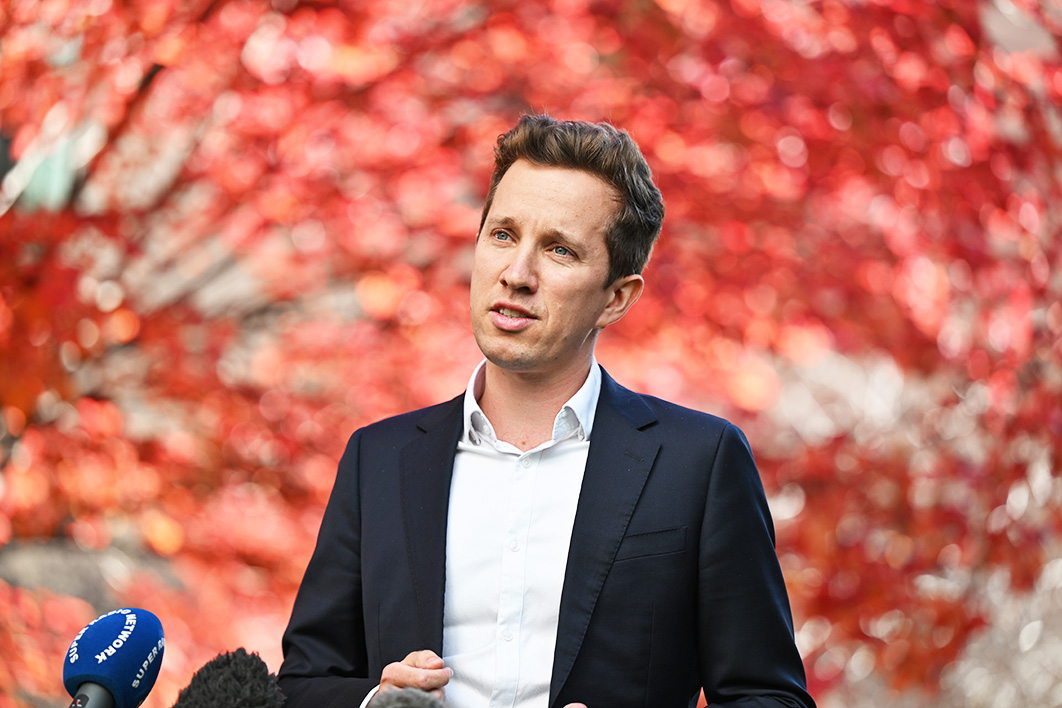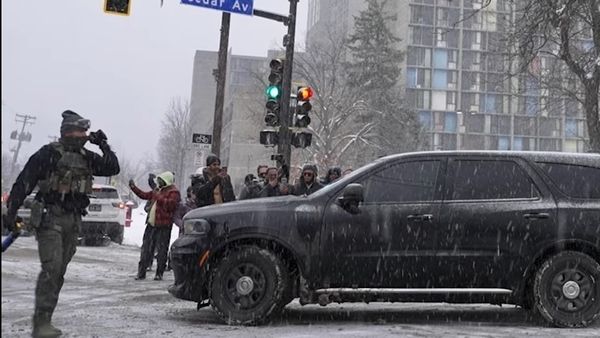
The possibility that the Greens and Labor will fail to broker a deal on the government’s $10 billion Housing Australia Future Fund is creating consternation in the community housing sector. The Greens, who are blocking the legislation in the Senate, argue that the HAFF fails to match the severity of Australia’s housing crisis. Labor is hanging tough, saying if the Greens don’t back the legislation it’ll make the HAFF an issue at the next election.
The HAFF is supposed to deliver 30,000 social and affordable homes over five years. It would be the first significant federal investment in rental homes for low-income earners since the Rudd government’s social housing initiative a decade and a half ago. That $5.6 billion scheme in response to the global financial crisis built almost 20,000 new dwellings and repaired another 12,000, some of which had become uninhabitable.
After that sugar hit, though, it was back to the usual lean years for not-for-profit housing providers, who once again had to cobble together funds from a range of sources to complete one-off projects, always uncertain where the next bucket of money or parcel of land would come from.
The result: Australia’s share of social housing, where rent is fixed at no more than 30 per cent of tenant income, continued its long-term decline to fall from just over 5 per cent of all dwellings in 2001 to 3.8 per cent at the last census.
Given the rarity of substantial public funding, many in the community housing sector are keen to see the HAFF proceed. Yet few could deny that the Greens’ critique is correct — Labor’s scheme is a meagre response to the scale of the problem.
More than 163,000 households are waiting for social housing. Since many of those households are couples and families with children, the number of people stuck in the queue is well over 300,000 and their wait could be longer than ten years. Four in ten households are classified as “greatest need” — in other words, they’re not just struggling to keep a roof over their heads but may be homeless or at risk of homelessness, fleeing family violence, or living in housing that makes them sick.
In its latest State of the Nation’s Housing Report, the National Housing Finance and Investment Corporation estimates that 331,000 low-income households are in rental stress, spending more than 30 per cent of their income in rent and unable to afford other essentials such as food, heating and transport. But, as the corporation acknowledges, this estimate is conservative. Other recent analysis puts unmet housing need at 640,000 households. The Greens are right to say that the 30,000 homes promised under the HAFF will barely touch the sides of Australia’s housing crisis.
Another strand to the Greens’ critique is that it will take too long for any homes to get built. In the interim, thousands of low-income tenants are at risk of being forced out of their current homes as they are removed from the expiring National Rental Affordability Scheme (another Rudd initiative).
The $10 billion for the HAFF will be invested rather than spent directly on housing. Only its returns, at least a year away, will fund construction. And, as the Greens also point out, Australia’s existing Future Fund lost money last financial year, so it could be several years before proceeds are available to invest.
The government says that up to $500 million from the HAFF could be invested in housing each year but it hasn’t specified a minimum annual spend.
Even assuming immediate positive returns, money from the fund won’t provide up-front grants to build dwellings. Instead, they will be used to bridge the gap between the rents low-income tenants can afford to pay and the costs of building, maintaining and operating housing. The idea is to give not-for-profit housing providers revenue certainty so that they can borrow from other sources. In this way, modest sums of public money are used to leverage large amounts of private capital for a positive social purpose.
At least that’s the theory. Analysis for the Australian Housing and Urban Research Institute concluded that “no amount of ‘innovative’ procurement or financing will yield a government ‘free lunch.’” The researchers found that the cheapest and most efficient way to fund new social housing is direct public investment — which is what the Greens are pushing for.
“Our point to the government is that you would not fund schools or hospitals via an uncertain gamble on the stock market,” housing spokesperson Max Chandler-Mather told the Conversation’s Michelle Grattan. “We’re much better off investing money directly in building public and affordable housing every year.”
Like Rudd’s GFC stimulus package, the HAFF will soon be fully committed. New builds will grind to a halt and we’ll be back to square one.
The Greens want the government to commit $5 billion in social housing funding annually. They say the money could come from reining in negative gearing and the capital gains concessions to property investors, or repealing the stage three tax cuts.
They are also calling for a two-year rent freeze. This sounds like a pitch to voters in the urban seats they hope to pinch from Labor at the next election, and it may well strike a chord in electorates with a high proportion of renters, like Macnamara in Melbourne, where Labor narrowly defeated the Greens on preferences in 2022. But it is a very blunt instrument likely to deter new private investment and have other unintended consequences.
A better approach could involve adapting sophisticated European models of rent regulation. Germany, where 58 per cent of households rent, has a system of reference rents for similar-quality dwellings in the same city or region. Landlords can’t raise rents more than 15 or 20 per cent above this level in any three-year period. Rents can rise in response to cost increases and wage increases, but only in a predictable and gradual manner. As economics writer Peter Martin has pointed out, the ACT limits rent increases to CPI and “Canberra landlords don’t seem to have withdrawn from the market.”
The government regards rent and tenancy laws as a matter for the states and territories. The Greens counter by pointing to the role Canberra played in preventing evictions during Covid. And Labor has undermined its own argument by making efforts to strengthen national renters’ rights a key priority at the most recent meeting of national cabinet.
The government could also use the National Housing and Homelessness Plan, which it is developing at the moment, and the next National Housing and Homelessness Agreement to develop measures with the states and territories to moderate rent rises and improve tenant security by getting rid of no-cause evictions and lease terminations.
The Greens’ overall critique of the HAFF is in many respects well founded. But are they letting the perfect be the enemy of the good by blocking the legislation?
The current stoush is reminiscent of the stand-off over Kevin Rudd’s carbon pollution reduction scheme, which the Greens refused to back in 2009, arguing that it would not reduce carbon pollution for at least twenty-five years. The following year they backed Julia Gillard’s carbon price instead. The outcome was a better policy.
Yet the Greens continue to wear opprobrium for that decision, not least because Gillard was so weakened by the broken “carbon tax” promise that her government and its carbon price were thrown out at the next election, ushering in a decade of inaction on climate.
Would it therefore be wise for the Greens to back the HAFF, despite all its shortcomings, and use it as a building block for better policy?
That’s certainly the view of their crossbench colleague senator Jacqui Lambie, who has labelled the Greens’ opposition “disgusting.” “For goodness sake, just tick off on it,” she said earlier this month. “Let’s get these homes built.”
Labor’s Penny Wong, leader of the government in the Senate, is similarly impatient. She has accused Chandler-Mather of prioritising media attention and his own ego “over housing for women and kids fleeing domestic violence.”
But Labor may be underestimating its opponent. A self-declared “massive housing nerd,” Chandler-Mather has a firm grasp of the policy issues and has a demonstrated capacity to get his message across to key audiences, especially younger voters. After all, that’s how he won the Brisbane seat of Griffith from Labor’s shadow environment minister, Terri Butler, at the federal election.
Labor leaders may also be misjudging the political moment. Many of its own members think the party’s housing policy is too weak and have put negative gearing reforms on the agenda for debate at Labor’s national conference in August. While prime minister Anthony Albanese dismissed such moves, the mood may be shifting.
A long-term trend is shifting households away from home ownership towards renting, and it isn’t only young people who are affected. Growing numbers of families with children are renting, and an increasing cohort of older long-term renters face the prospect of their precarious housing circumstances extending into old age as they leave the workforce and their incomes fall.
Late last year the government appointed Susan Lloyd-Hurwitz as the interim head of its National Housing Supply and Affordability Council “to deliver independent advice to Government on ways to increase housing supply and affordability.” As the former head of Mirvac Property and a former president of the Property Council, Lloyd-Hurwitz is not a usual suspect when it comes to debates about tax breaks for property investors. Last week she told the Financial Review that she thinks that concessions like negative gearing and the capital gains tax discount drive up prices and should be reined in.
Chandler-Mather says the Greens’ demands are “a public starting position” and “they’d like to meet the government half way.” If Labor wants to get the HAFF over the line, then it could offer more. It could, for example, go beyond the treasurer’s oblique hints that there will be more money and pledge that the HAFF will be only the first tranche of a pipeline of investment. It could also indicate more clearly how it might work with the states and territories to improve conditions for tenants in the private rental market.
Affordable housing policy consultant Jennifer Kulas recommends that the government tweak the scheme to provide greater certainty that much-needed funding will be made consistently available to the sector over time. She says it could remove the $500 million cap on annual disbursements and formally guarantee a minimum yearly amount from the HAFF instead. Those funds could be indexed in line with construction costs, which rose almost 12 per cent last year. The government could also promise to increase the HAFF’s base capital each year so that the fund continues to grow and fund new housing beyond its current five-year horizon.
By pushing the HAFF to the brink, Albanese appears to be wagering that Labor can see off the Greens’ challenge at the next election by arguing that they stopped any new homes from getting built. But given the way the debate about housing in Australia is developing, that may not be the safest bet. •
On Tuesday 23 May, Peter Mares will be facilitating a free online forum on Australia’s housing crisis for La Trobe University’s Ideas and Society Program.
The post The perfect versus the good appeared first on Inside Story.







